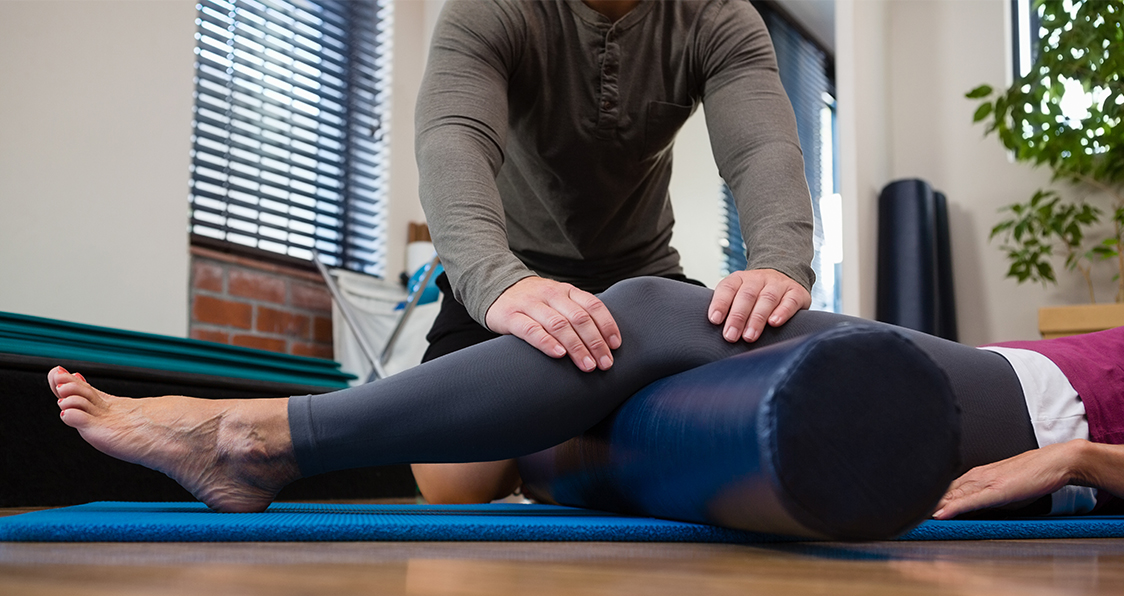Foam Rolling Mistakes to Avoid
Foam rolling is a method of self-myofascial release. Regular foam rolling can help with increasing flexibility, reducing soreness, and eliminating muscle knots. A foam roller is a lightweight, cylindrical tube made of compressed foam.
Your muscles are tightly wrapped around with fascia which holds them together and gives them shape. In brief, foam rolling can help with loosening and warming up the fascia so it can give your muscle fibers room to grow bigger and stronger.
Not Applying the Right Pressure
Most people don’t know how much pressure to apply when they’re foam rolling. They either apply too much or too little pressure and make the process of foam rolling ineffective. If you’re rolling too lightly, it might not have much impact on your tense muscles.
Roll too hard, and you might add to the pain and end up tensing up your muscles. Different rollers put a different amount of pressure on your muscles. The hollow foam rollers apply more pressure as compared to the full cylinders, so choose your rollers accordingly.
Rolling the Joints
Not the joints you’re thinking about. We’re talking about the bone joints here. You should avoid rolling the joints and other boney areas like the shoulder blades, ankles, and parts of the hips and legs (like the knees and shins). Foam rolling these areas will cause nothing more than pain and discomfort.
Rolling the bones doesn’t help in loosening up the bones and tendons. You need to roll the muscles and tissues beneath. You should also avoid rolling the IT band (the tendon that runs along the outside of your thigh from the top of the pelvis to the shin bone) and instead focus on the quads, hamstrings, and glutes.
You’re Not Rolling the Upper Body
Since foam rolling was brought to the spotlight by runners, most people assume that this method of self-myofascial release is only for the lower body. Foam rolling the upper body can be a little tricky and you might need a lacrosse ball for the hard-to-reach muscles.
You should be foam rolling your pectoral muscles, lats, triceps and the muscles around the shoulder blades. The movement of the foam roller while rolling the upper body will be different as compared to the lower body and can take some practice to master.
Spending Too Much Time on Trigger Points
Many people think that spending a lot of time on tense spots will release muscle knots. On the contrary, putting too much pressure on the trigger points can lead to an increase in pain and irritation, and can sore up injured muscle tissues.
If you want to loosen up a tense area, you should start with rolling the general larger surface area around the muscle for 60 to 90 seconds and spend 30 to 60 seconds targetting the knotted tissues.
As you loosen up the area around a trigger point, you’ll likely indirectly decrease the stress and tension you feel in the problematic area.
Rolling the Lower Back and Other Delicate Muscles
While it’s okay to foam roll your upper and middle back, you shouldn’t be working your lower back with a roller. Since it’s difficult to balance a foam roller on your lower back, you might over-reach your spine while getting in the right position to roll out the muscle.
Foam rolling can be especially dangerous for your lower back if you have an exaggerated arch or any other pre-existing lower back issues. If you have a stiff lower back, use a lacrosse ball to target the tense muscles instead of a foam roller.
Header image courtesy of Envato Elements
How often do you foam roll? Let us know in the comments below. Also, be sure to follow Generation Iron on Facebook and Twitter.









